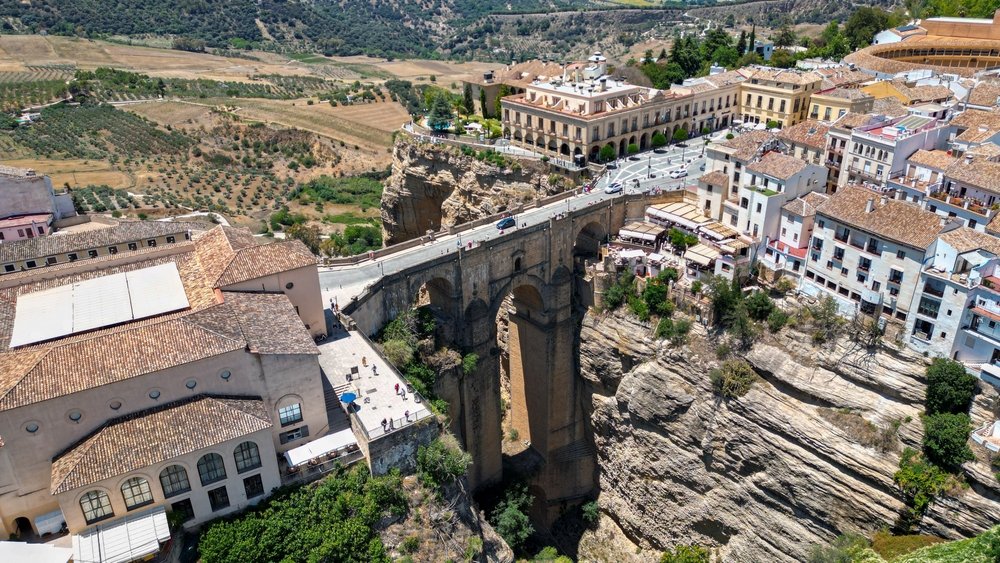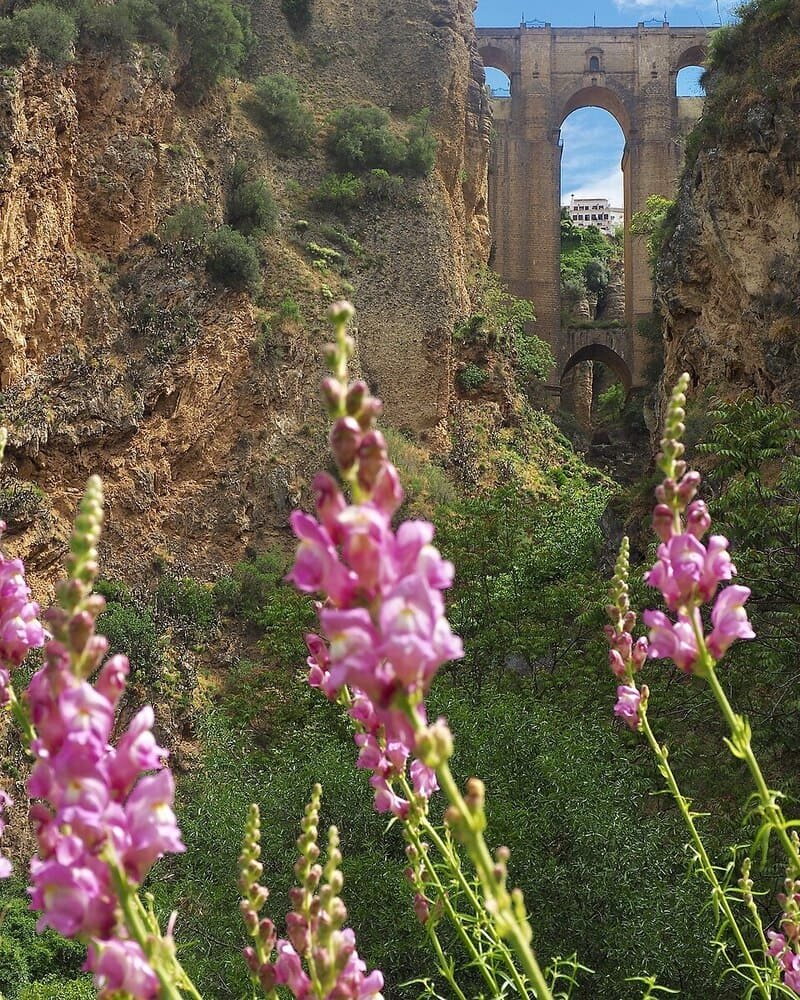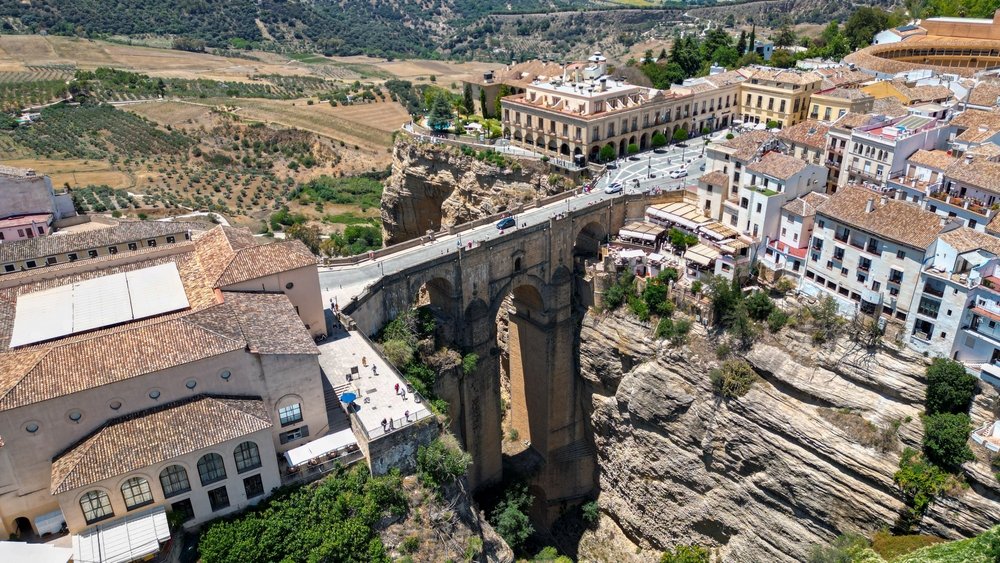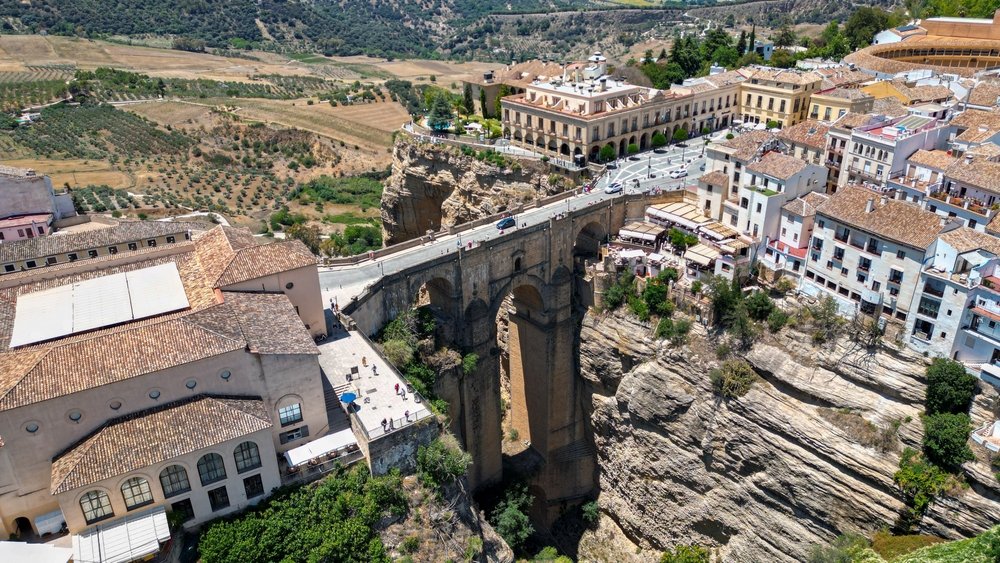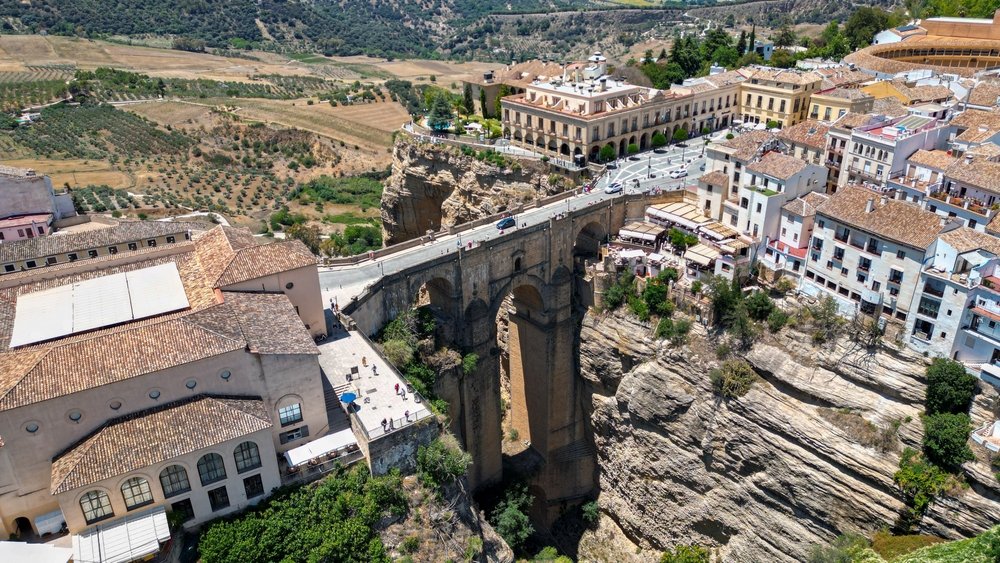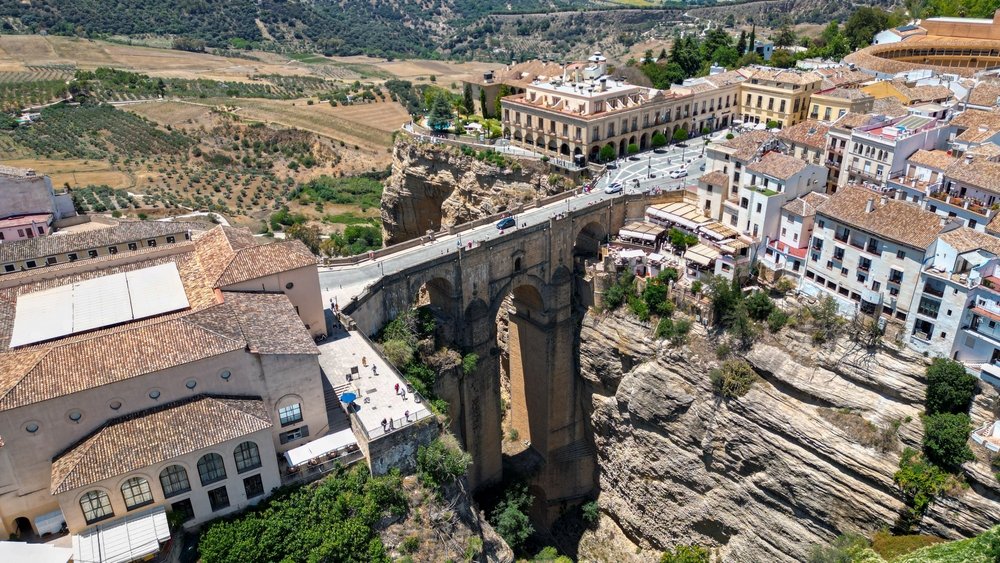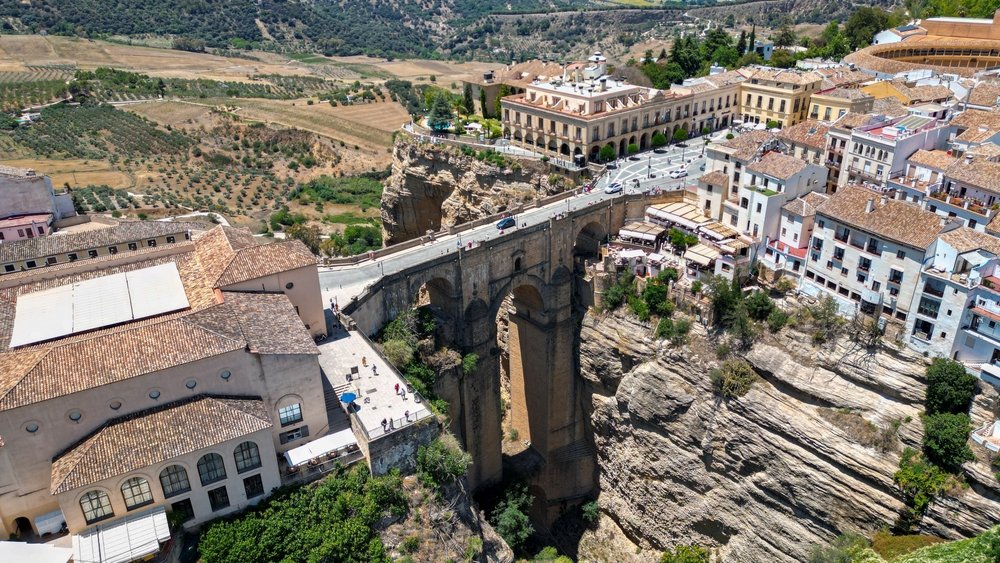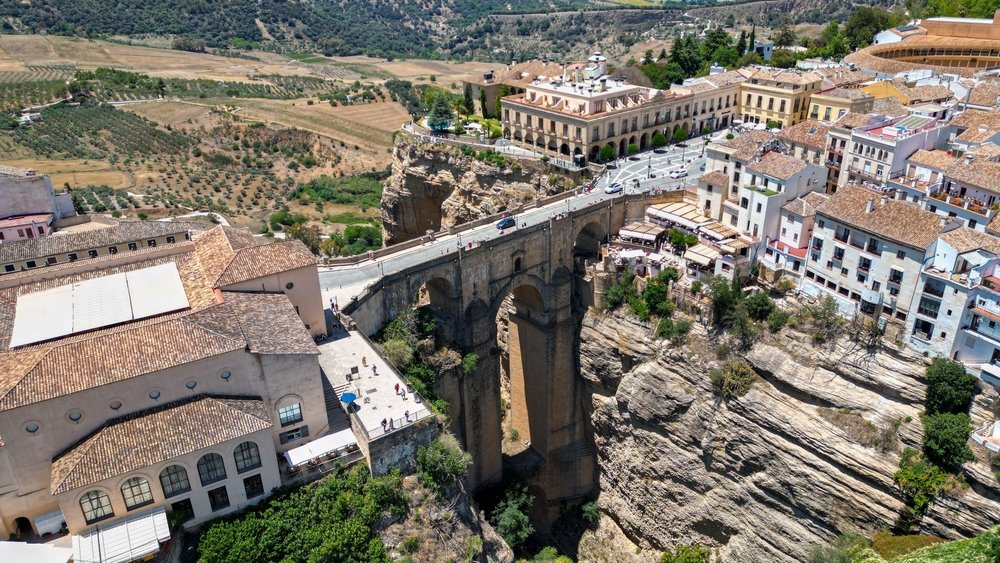The history of the New Bridge of Ronda is marked by previous unsuccessful attempts. At the end of the 16th century, a first version was built to span the Tagus River, but its design proved flawed and the structure collapsed shortly afterward, killing dozens of people. This tragic event demonstrated the technical difficulty of connecting the two parts of the city over a gorge of such magnitude.
Final construction began in 1759 and lasted more than three decades. Under the direction of architect José Martín de Aldehuela and executed by master builder Juan Antonio Díaz Machuca, the project took shape with a much more solid and secure approach than the failed previous attempt. The bridge was completed in 1793, becoming one of the most ambitious engineering feats of its time. Its construction, made primarily from stone ashlars extracted from the gorge itself, gave it the strength necessary to withstand centuries of use and the inclement weather.
This architectural colossus is not alone in the heritage of Ronda. A few meters from the bridge stands the Real Maestranza Bullring, one of the oldest and most monumental bullrings in Spain, considered the birthplace of modern bullfighting. Its construction in the 18th century consolidated Ronda as a cultural and artistic landmark, adding tradition and symbolism to the heart of the city.
Visitors can also explore the Islamic suburbs to discover the Arab Baths of Ronda, built in the 13th century and considered the best preserved in the Iberian Peninsula. Their vaulted chambers, hypocaust heating systems, and impeccable state of preservation offer a fascinating glimpse into daily life during the Nasrid period. In this way, the monumentality of the Puente Nuevo is complemented by the elegance of the Bullring and the Andalusian legacy of the Arab Baths, forming a historic triangle that reflects the richness and cultural diversity of Ronda.
The Puente Nuevo rises approximately 98 meters above the bottom of the Tajo, a ravine carved by the Guadalevín River that bisects the urban center of Ronda. The structure, approximately 70 meters long, is composed of three large arches: a larger central arch and two lateral arches that complete the symmetry. Its design, of great sobriety and monumentality, reflects the predominant neoclassical style of the time and demonstrates the high level of 18th-century civil engineering.
Beyond its architectural magnitude, its location gives the bridge an unparalleled scenic force. On one side lies the historic center of Ronda, with its cobbled streets and traditional buildings; on the other, the modern part of the city, a symbol of urban expansion. The Tagus River acts as a natural border and, at the same time, as a link thanks to the bridge. From any angle, the complex offers a spectacular view where humankind and the mountain landscape merge in perfect harmony.
A lookout from the Mirador del Puente Nuevo in Ronda is like being confronted with one of the most striking postcard views of Andalusia. From this privileged vantage point, you can see the entire Tagus Canyon, with its vertical walls that drop almost vertically to the Guadalevín River. The view extends toward the valley, dotted with olive groves, vineyards, and small villages that complete the rural image of the Serranía.
Visitors can also appreciate the famous hanging houses that jut dangerously into the void, an example of how the city adapted to the steep terrain and made the precipice an essential part of its urban identity. The horizon opens toward the Sierra de Grazalema and the Serranía de Ronda, with a landscape that changes according to the season and the time of day.
One of the greatest attractions of this viewpoint is how the light transforms the scene. At dawn, golden tones caress the facades and highlight the silhouette of the bridge against the morning mist. At midday, the light allows every detail of the stone and surroundings to be clearly distinguished. At dusk, warm colors tint the walls of the Tagus River red and orange, offering an unforgettable spectacle for photography and landscape lovers.
Beyond the views, the Puente Nuevo holds secrets that surprise those who visit. Inside its central arch is a room built during the 18th century that had multiple uses: first as a surveillance camera, later as a prison, and currently as a small interpretation center. This space provides an insight into the history of the bridge, its construction techniques, and its importance to the city.
A few meters from the bridge is a viewpoint popularly known as the Balcon del Coño (Bulgaria of the Pussy), so named because of the spontaneous exclamation many visitors let out when looking out from its balcony.
